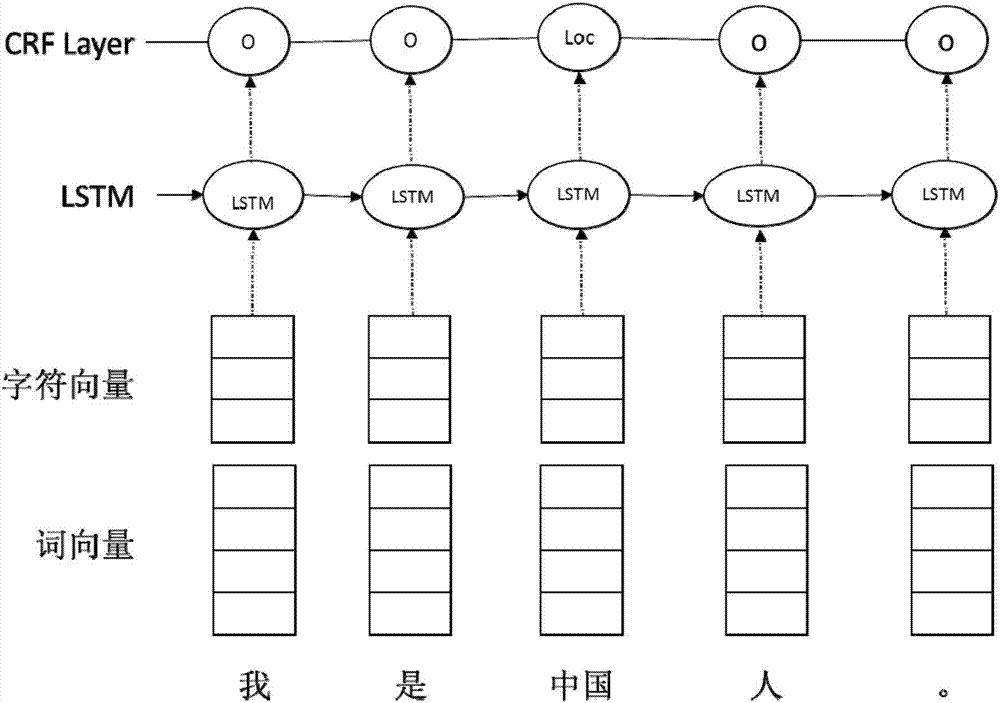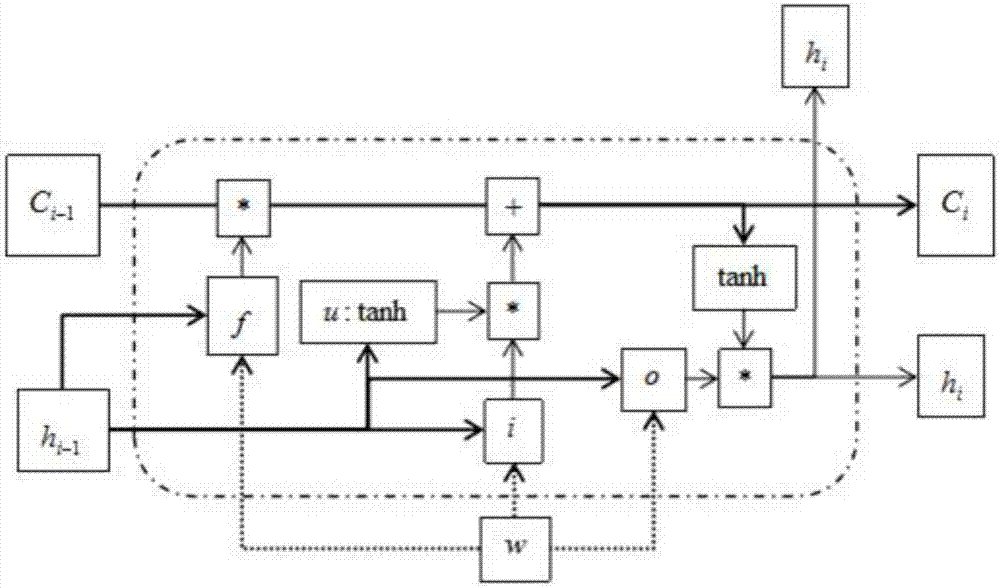Named entity recognizing method based on LSTM
A technology of named entity recognition and gradient descent algorithm, applied in the information field, can solve the problems of few network layers, low recognition rate of unregistered words, and insufficient recognition accuracy, and achieve the effect of improving accuracy
- Summary
- Abstract
- Description
- Claims
- Application Information
AI Technical Summary
Problems solved by technology
Method used
Image
Examples
Embodiment Construction
[0030] In order to make the above objects, features and advantages of the present invention more obvious and understandable, the present invention will be further described in detail below through specific implementation cases and in conjunction with the accompanying drawings.
[0031] The invention discloses a named entity recognition method based on LSTM, such as recognizing a person's name, a place name, an organization name, a brand name, a company name, etc. from an unstructured text. The core problem to be solved in the present invention comprises two: 1. use LSTM-CRF model to improve the precision of named entity recognition; 2. add the feature of the character vector of word, solve the recognition (Out of Vocabulary, OV ).
[0032] In order to improve the accuracy of named entity recognition, the present invention adds LSTM character features and LSTM character epithet feature layers on top of the traditional CRF model, and its detailed structure is as follows figure...
PUM
 Login to View More
Login to View More Abstract
Description
Claims
Application Information
 Login to View More
Login to View More - R&D
- Intellectual Property
- Life Sciences
- Materials
- Tech Scout
- Unparalleled Data Quality
- Higher Quality Content
- 60% Fewer Hallucinations
Browse by: Latest US Patents, China's latest patents, Technical Efficacy Thesaurus, Application Domain, Technology Topic, Popular Technical Reports.
© 2025 PatSnap. All rights reserved.Legal|Privacy policy|Modern Slavery Act Transparency Statement|Sitemap|About US| Contact US: help@patsnap.com



